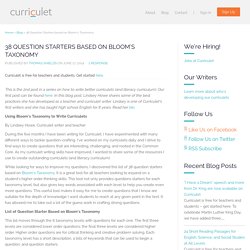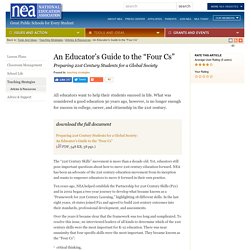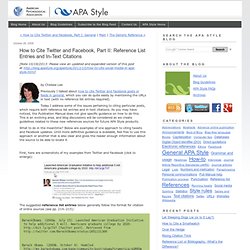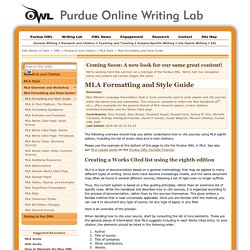

High Order Thinking Chart. 249 Bloom's Taxonomy Verbs For Critical Thinking. Bloom’s Taxonomy’s verbs–also know as power verbs or thinking verbs–are extraordinarily powerful instructional planning tools.

In fact, next to the concept of backwards-design and power standards, they are likely the most useful tool a teacher-as-learning-designer has access to. Why? They can be used for curriculum mapping, assessment design, lesson planning, personalizing and differentiating learning, and almost any other “thing” a teacher–or student–has to do. For example, if a standard asks students to infer and demonstrate an author’s position using evidence from the text, there’s a lot built into that kind of task. Developing-21st-century-critical-thinkers-infographic-mentoring-minds.jpg (JPEG Image, 500 × 773 pixels)
38 Question Starters based on Bloom’s Taxonomy - Curriculet. Curriculet is free for teachers and students.

Get started here. This is the 2nd post in a series on how to write better curriculets (and literacy curriculum). Our first post can be found here. In this blog post, Lindsey Howe shares some of the best practices she has developed as a teacher and curriculet writer. Upgrade your KWL Chart to the 21st Century. One of the take aways from the Curriculum Mapping Institute this past week was that it brought an upgrade to THE trusted KWL (Know, What to Know and Learned) Chart to the forefront.

It seems a no brainer…one of those things… “I should have thought about it”… So what is this upgrade all about? An “H” snuck into the Acronym! High Order Thinking Chart. Piktochart- Infographic & Presentation Tool. Welcome to Myndbook Mind Maps, Note Maps, & Concept Maps, Online Free. 15 Lesson Plans For Making Students Better Online Researchers. Google is usually one of the first places students turn to when tasked with an assignment. Whether it’s for research, real-time results, or just a little digital exploration … it’s important they know how to properly Google. Lucky for teachers (and students, of course), Google has a handy set of lesson plans that are just waiting to be unleashed upon the leaders of tomorrow.
While I understand there’s a LOT more to research than just Googling, it’s important to note that this is where nearly all students start their research. Therefore, it’s a critical skill if they’re going to start down the right paths. Below are 15 lesson plans courtesy of Google designed to make students better online researchers. Check out the useful Lesson Plan Map too to see how all these lessons fit together and what skills they teach. Beginner Level Pick the best words to use in academic searching, whether students are beginning with a full question or a topic of just a few words. Intermediate Level Advanced Level. Five-Minute Film Festival: Teaching Digital Citizenship. "Digital citizenship" is an umbrella term that covers a whole host of important issues.

Broadly, it's the guidelines for responsible, appropriate behavior when one is using technology. But specifically, it can cover anything from "netiquette" to cyberbullying; technology access and the digital divide; online safety and privacy; copyright, plagiarism, and digital law, and more. Zaption - Learn with Video. An Educator’s Guide to the “Four Cs” Preparing 21st Century Students for a Global Society Found In: teaching strategies All educators want to help their students succeed in life.

What was considered a good education 50 years ago, however, is no longer enough for success in college, career, and citizenship in the 21st century. The “21st Century Skills” movement is more than a decade old. Yet, educators still pose important questions about how to move 21st century education forward. Ten years ago, NEA helped establish the Partnership for 21st Century Skills (P21) and in 2002 began a two-year journey to develop what became known as a “Framework for 21st Century Learning,” highlighting 18 different skills. Over the years it became clear that the framework was too long and complicated. Critical thinking, communication, collaboration, and creativity. Now the challenge is building the “Four Cs” into K-12 education. 10 Tech Skills Every Student Should Have. My Digital Life LAUSD. K12 Digital Citizenship - Resources. Https doc 08 bs apps viewer googleusercontent.
Https doc 0o bs apps viewer googleusercontent. Https doc 0g bs apps viewer googleusercontent. APA: How to Cite Twitter and Facebook, Part II: Reference List Entries and In-Text Citations. [Note 10/18/2013: Please view an updated and expanded version of this post at by Chelsea Lee Previously I talked about how to cite Twitter and Facebook posts or feeds in general, which you can do quite easily by mentioning the URLs in text (with no reference list entries required).

Today I address some of the issues pertaining to citing particular posts, which require both reference list entries and in-text citations. As you may have noticed, the Publication Manual does not give specific guidance on how to do this. This is an evolving area, and blog discussions will be considered as we create guidelines related to these new references sources for future APA Style products. What to do in the meantime? First, here are screenshots of my examples from Twitter and Facebook (click to enlarge): The suggested reference list entries below generally follow the format for citation of online sources (see pp. 214–215): OWL: MLA Formatting and Style Guide.
Coming Soon: A new look for our same great content!

We're working hard this summer on a redesign of the Purdue OWL. Worry not! Our navigation menu and content will remain largely the same. Source It! Avoiding Plagiarism. BibMe: Fast & Easy Bibliography Maker - MLA, APA, Chicago, Turabian - Free. Digital Citizenship. EasyBib: Free Bibliography Generator - MLA, APA, Chicago citation styles. The Dark Side of Plagiarism. Why Cite? Avoiding Plagiarism.
EasyBib: Free Bibliography Generator - MLA, APA, Chicago citation styles. Online Etymology Dictionary.
Free Classic Books Online at Classic Reader.